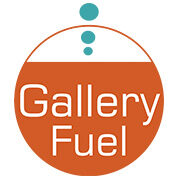 It seems every year now, there is some event that causes businesses to close for an undetermined length of time. Minimizing risk to your art gallery is crucial. Be it a hurricane, flood, wildfire, or virus, being closed, and having reduced staff to keep an eye on things, along with emergency personnel focused elsewhere, there are some considerations to take into account to protect your gallery and artworks.
It seems every year now, there is some event that causes businesses to close for an undetermined length of time. Minimizing risk to your art gallery is crucial. Be it a hurricane, flood, wildfire, or virus, being closed, and having reduced staff to keep an eye on things, along with emergency personnel focused elsewhere, there are some considerations to take into account to protect your gallery and artworks.
My good friend Jennifer Schipf, AXA XL’s Global Practice Leader for Art, put together a list of considerations vital for your galleries emergency preparedness. She has worked with countless galleries and museums and understands that in a time of crisis, there is a lot to keep track of to ensure the safety of staff members, communicating with clients and managing finances.
Unfortunately, times of crisis create opportunities for art thieves. Natural disasters will not stop and wait for business conditions to be optimal before striking. Lose can be costly if not adequately prepared for, but as you will see below, there are things you can do to minimize your gallery’s risk.
Tips for Minimizing Risk To Your Art Gallery
The following guidance concerning physical security is intended as a starting point for maintaining a high level of protection during the COVID-19 emergency.
This list isn’t meant to be exhaustive, and the relative priority of different responses will necessarily vary depending on a museum’s/gallery’s location, existing protection systems and processes, and related factors.
Secure all access/entry points
This may seem obvious but bears repeating: Doors, windows, ventilation systems, skylights and the like all represent potential vulnerabilities. While a facility’s entry points almost certainly are already secured, the mechanisms/systems in place may be predicated on the notion that people will always or almost always be around, and/or that common entry points will be monitored continuously.
In other words, under “normal” circumstances, there just wouldn’t be enough time for thieves to breach the security measures before being spotted.
However, in these “abnormal” times when no one is around and monitoring may be more sporadic, some access points might need to be hardened. Also, consider the potential for gaining entry via neighboring premises.
Since they are most likely also shutdown, neighbors whose security measures are less robust could offer attractive stepping-stones into museums and galleries.
Check the interior security
Here, again, time is the critical variable. Once someone gains access and is inside, they could now have more time to snatch something before a response is initiated.
If current physical obstacles aren’t enough to delay access to a target, consider reinforcing the security of the hanging hardware. Also, whenever possible, high-value objects – particularly those that are small and easy to remove – should be moved into strong rooms or similarly secure locked spaces, according to what is available.
Be sure that responses are given to all triggered alarms
Review the contractual agreements with security companies to confirm when triggered alarms will, and, more importantly, won’t generate onsite responses.
Discussions also should be conducted with any security company to verify it is still operating at full capacity and, if not, what impacts that could have on its usual response times.
We also recommend that site interventions be initiated immediately whenever an interruption in the alarm transmission line can’t be settled within two minutes.
Ensure that adequate electricity is available
Alarm and temperature/humidity control systems require a continuous supply of electricity. If power outages are possible/likely, backup generators that can be activated immediately are essential.
Also, if a facility is protected by sprinklers, any impairments to its fire protection system during the closure must be avoided, and its water supply should be secured.
Check the conservation period for CCTV footage
With shuttered operations, it is possible that a breach wouldn’t be discovered for a long time. Accordingly, it is essential that the CCTV system has enough storage capacity to retain recordings of the premises for as long as permitted under local laws.
Consider additional security, such as regular patrols at irregular times
Empty streets open up new opportunities for vandals and thieves. Consider organizing exterior patrols to check the integrity of potential access points.
This could be especially relevant in rural areas, where expected response times are longer.
Monitor extreme weather events
Nature hasn’t been suspended; hurricanes, typhoons, tornadoes and the like are continuing threats, even as this coronavirus spreads across the world.
In areas exposed to natural catastrophes, museum administrators and gallery owners should check to ensure that existing recovery plans can still be implemented efficiently and in a timely manner following extreme weather events. Also, all weather monitoring and detection systems, e.g. water detection devices, should be checked to ensure they are activated and fully functioning.
Other locations and transit risks
Art and artifacts that are currently “outside the house” – e.g. on loan to other museums, on consignment with other galleries, in the custody of conservators or restorers, or in fine art warehouses – may need to stay put for a while. If that is the case, be sure to understand what steps those other entities are taking to safeguard these objects during this crisis.
To the Point 
It’s a good business practice to review what protective measures your gallery has in place regularly and for leadership and staff to access to emergency contact information when outside the gallery. Times of crisis almost always create new challenges that your current protection plan may not adequately cover.
Check-in with service providers to ensure they can provide your gallery business with proper service during a crisis. You know the saying… Hope for the best, plan for the worst. Be safe.
Check out the full article here.
These articles might also be helpful.
Disaster Preparedness: Can Your Art Gallery Survive?
Selecting Art Gallery Insurance and Managing Risk
Cyber Attacks: Is Your Gallery Business Ready for Battle?


Leave a Reply